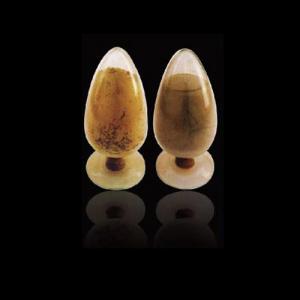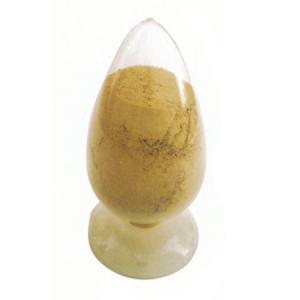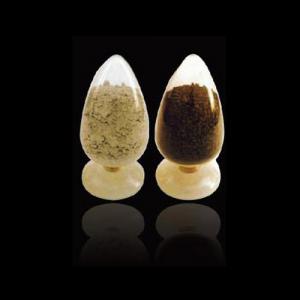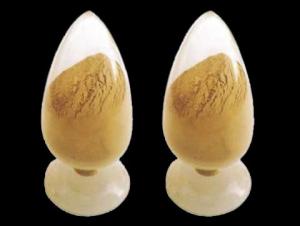Castable Refractory For Cement Kiln and Boiler
- Loading Port:
- China Main Port
- Payment Terms:
- TT OR LC
- Min Order Qty:
- -
- Supply Capability:
- -
OKorder Service Pledge
OKorder Financial Service
You Might Also Like
Benefits:
1) Good performance to thermal stability, slag and abrasion resistance.
2) Good fluidity and convenient to install and maintain
3) Less installation and drying/sintering time
4) Efficiently reduced the production stoppages & downtimes
5) Labor and cost saving by prolonging campaign length.
| Refractory Castable for cement kiln | | | | |
| Items | HGJ-1 | HAJ-3 | HAM-2 | HAL-2 |
| Main Contents | Al2O3 | Al2O3 | MgO-Al2O3 | Al2O3-SiO2 |
| Characteristics | High strength anti-abrasion steel fiber castables | Chemical-bonding refractory castables | Low cement magnesium-aluminum castables | high purity bauxite low cement |
| Refractoriness | 1950℃ | 2150℃ | 2150℃ | 1700℃ |
| Density | 2.95g/cm3 | 2.89g/cm3 | 2.92g/cm3 | 2.55g/cm3 |
| Compressive Strength | 110℃×2h68.5MPa; | 110℃×2h59.2MPa; | 110℃×2h40.8MPa; | 110℃×2h52MPa |
| | 1500℃×3h 96.8 MPa | 1500℃×3h106.1MPa | 1500℃×3h102.5MPa | 1500 ℃×3h 75 MPa |
| Permanent Linear Changing Rate | 1500℃×3h+0.21% | 1500℃×3h+0.29% | 1500℃×3h+0.32% | 1500℃×3h±0.5% |
| Installation mode | casting | casting | casting | casting |
| Additive required | 5-10%water | 5-10%water | 5-10%water | 5-10%water |
| Application | Rotary kiln or industry furnace | Industry kiln | Ladle | differentpartsforcementkiln |
characteristics:
1. The dosage of cement is low, the content of calcium only accounts for 1/4-1/3 of common Refractory Castable
2. Wter consumption rate during the construction is almost 1/2 or 1/3 of the common Refractory Castable, so the Low Cement Refractory Castable has high density and low porosity.
3. High normal temperature cure property, intensity will be increased after medium temperature and high temperature. Three or five times more than common Refractory Castable.
4. Good volume stability under high temperature.
Application:
Material for metallurgy, petroleum, chemical and other industries kilns
Part of refining installation, like ladle cover
Insert for roof of the kiln
- Q:What are the key innovations in monolithic refractories for the iron and steel industry?
- Some key innovations in monolithic refractories for the iron and steel industry include the development of advanced materials such as low cement castables, gunning mixes, and shotcretes. These materials offer improved resistance to thermal shock, increased strength, and enhanced erosion resistance, thereby extending the service life of refractory linings in high-temperature environments. Additionally, the introduction of monolithic refractory installation techniques such as robotic application and advanced spraying technologies has improved efficiency and reduced downtime during maintenance and repair operations.
- Q:How do monolithic refractories withstand the thermal cycling in aluminum smelting applications?
- Monolithic refractories have been specifically developed to endure the extreme thermal cycling conditions that arise in aluminum smelting applications. The exceptional properties of these refractories enable them to withstand the rapid and repetitive heating and cooling cycles without experiencing significant damage or failure. A key characteristic of monolithic refractories is their remarkable thermal shock resistance, which allows them to withstand sudden temperature changes without cracking or spalling. Throughout the aluminum smelting process, the refractories are exposed to extreme temperatures when molten aluminum is poured into the molds or when the molten metal comes into contact with the refractory lining. It is essential for the refractories to quickly absorb and dissipate heat to prevent any thermal shock damage. Furthermore, monolithic refractories possess a high thermal conductivity, which facilitates the efficient transfer of heat away from the refractory lining. This effectively reduces the risk of thermal stress and thermal fatigue. By dispersing the heat generated during the smelting process, the refractories minimize temperature variations within the lining, thereby preventing the occurrence of cracks or fractures. Moreover, monolithic refractories exhibit excellent chemical resistance, a crucial characteristic in aluminum smelting applications. These refractories are formulated to resist the corrosive effects of molten aluminum and other chemicals present in the smelting process. By offering resistance to chemical corrosion, the refractories help maintain the integrity of the refractory lining and extend its service life. Additionally, monolithic refractories are often reinforced with fibers or other structural materials to enhance their mechanical strength and durability. These reinforcements provide added resistance against mechanical stresses, such as thermal expansion and contraction, which arise during the thermal cycling process. In conclusion, the purpose of monolithic refractories is to withstand the thermal cycling conditions encountered in aluminum smelting applications. Their exceptional thermal shock resistance, high thermal conductivity, excellent chemical resistance, and enhanced mechanical strength enable them to endure extreme temperature fluctuations without experiencing significant damage. These refractories play a crucial role in maintaining the integrity and efficiency of the smelting process in the aluminum industry.
- Q:Can monolithic refractories be used for the lining of ladle refining furnaces and VOD converters?
- Indeed, ladle refining furnaces and VOD converters can benefit from the utilization of monolithic refractories. These refractories, which consist of a single, uniform material, can be molded and installed in various settings, particularly those involving extreme temperatures such as ladle refining furnaces and VOD converters. The advantage of monolithic refractories lies in their simplicity of application and repair. They can be either cast or gunned in place, offering flexibility in terms of lining design and installation. The lining of ladle refining furnaces and VOD converters requires materials capable of withstanding high temperatures, chemical reactions, and mechanical stresses. Monolithic refractories are well-suited for these demanding applications due to their exceptional resistance to thermal shock and chemical attack. In the case of ladle refining furnaces, monolithic refractories are used to line the vessel in which molten metal is contained and processed. By doing so, these refractories help to maintain the desired temperature and safeguard the ladle from the corrosive effects of both molten metal and slag. Additionally, they serve as insulation to minimize heat loss and enhance energy efficiency. VOD converters, on the other hand, are employed in the steelmaking process to reduce the carbon content of molten steel. Monolithic refractories play a crucial role in lining the converter's vessel and ensuring the maintenance of the required temperature for the decarburization reaction. Furthermore, they provide protection against the corrosive impact of molten metal and slag, thereby guaranteeing the converter's durability and performance. To summarize, monolithic refractories possess outstanding characteristics that make them an excellent choice for lining ladle refining furnaces and VOD converters. Their versatility, ease of installation, and ability to withstand high temperatures and chemical attack render them perfectly suited for these critical applications within the steel industry.
- Q:What are the limitations of monolithic refractories in high-temperature applications?
- Monolithic refractories have certain limitations when used in high-temperature applications. One major limitation is their susceptibility to thermal shock. Monolithic refractories lack the structural stability and resistance to sudden temperature changes compared to other refractory materials. Additionally, their relatively low thermal conductivity can lead to uneven heat distribution and potential hotspots, affecting the overall performance and longevity of the refractory lining. Another limitation is their susceptibility to chemical attack by certain aggressive environments, which can lead to accelerated deterioration and reduced lifespan. Overall, while monolithic refractories offer certain advantages in terms of installation flexibility and ease of maintenance, their limitations in terms of thermal shock resistance, thermal conductivity, and chemical resistance must be considered in high-temperature applications.
- Q:How are monolithic refractories installed in iron and steel production processes?
- The installation of monolithic refractories in iron and steel production processes necessitates various methods depending on the specific application and requirements. The installation process typically encompasses the subsequent steps: 1. Surface Preparation: Prior to installing monolithic refractories, it is imperative to adequately prepare the surface where they will be applied. This involves cleansing and eliminating any loose materials, dust, or contaminants from the substrate. 2. Mixing: Monolithic refractories comprise diverse materials, including aggregates, binders, and additives. These constituents are blended in specific proportions to attain the desired properties and consistency. The mixing process can be executed manually or using mechanical mixers. 3. Application: Various techniques exist for applying monolithic refractories, such as gunning, casting, ramming, and troweling. The chosen method is contingent upon factors such as the structure's shape, accessibility, and required thickness. - Gunning: This technique entails utilizing a gunning machine to spray the refractory material onto the surface. It is frequently employed for repairing or patching existing linings or for swift installation in hard-to-reach areas. - Casting: In casting, the refractory material is poured into molds or forms and allowed to solidify and harden. This method is suitable for fabricating intricate shapes and large-sized components. - Ramming: Ramming involves manually or mechanically compacting the refractory material into a mold or form using a ramming tool. This approach is commonly employed for lining induction furnaces, ladles, and other equipment. - Troweling: Troweling is a manual method wherein the refractory material is applied and smoothed using a trowel. It is frequently utilized for minor repairs or touch-ups. 4. Curing: Subsequent to the application of the refractory material, curing is necessary to attain its optimal strength and performance. Curing involves allowing the material to dry and harden at a controlled temperature and humidity for a specified duration. This step is crucial to ensure the monolithic refractory lining's long-term durability and resistance. In conclusion, the installation of monolithic refractories in iron and steel production processes necessitates meticulous preparation, proper mixing, and the appropriate application technique. It is imperative to adhere to manufacturer guidelines and industry best practices to ensure a successful installation that fulfills the specific requirements of the production process.
- Q:How do monolithic refractories improve energy efficiency in the iron and steel industry?
- Monolithic refractories improve energy efficiency in the iron and steel industry by providing better insulation and reducing heat loss. They have lower thermal conductivity compared to traditional refractory bricks, which means less heat is conducted through the lining of the furnaces or kilns. This leads to reduced energy consumption and improved thermal efficiency. Additionally, monolithic refractories offer better resistance to thermal shock, minimizing the need for frequent repairs or replacements, thereby saving energy and reducing downtime.
- Q:What are the common challenges faced by monolithic refractories in the iron and steel industry?
- Some common challenges faced by monolithic refractories in the iron and steel industry include thermal shock resistance, erosion and abrasion resistance, chemical corrosion resistance, and the ability to withstand high temperatures and thermal cycling. These challenges arise due to the harsh operating conditions, such as extreme heat, rapid temperature changes, and exposure to corrosive chemicals, which can cause damage and reduce the lifespan of refractory materials.
- Q:How do monolithic refractories contribute to the overall productivity of iron and steel production?
- Monolithic refractories play a crucial role in enhancing the overall productivity of iron and steel production. These refractories are widely used in various applications such as furnaces, ladles, and tundishes, offering excellent thermal stability and resistance to chemical attacks. By providing a durable lining, monolithic refractories ensure longer campaigns and reduced downtime for repairs and maintenance. This leads to increased production efficiency, reduced energy consumption, and improved product quality, ultimately contributing to the overall productivity of iron and steel production.
- Q:What are the main factors affecting the thermal conductivity of monolithic refractories?
- The main factors affecting the thermal conductivity of monolithic refractories are the composition of the refractory material, the density of the material, the porosity of the material, and the presence of any additives or impurities. The composition of the refractory material plays a significant role in determining its thermal conductivity. Different types of refractory materials, such as alumina-based, silica-based, or magnesia-based, have different thermal conductivities due to their varying chemical compositions. For example, materials with a higher alumina content generally have higher thermal conductivities compared to materials with a higher silica content. The density of the refractory material also affects its thermal conductivity. Generally, materials with higher densities have higher thermal conductivities because the closely packed particles allow for more efficient heat transfer. On the other hand, materials with lower densities have lower thermal conductivities as the heat transfer is hindered by the presence of air pockets or voids. The porosity of the refractory material is another important factor affecting its thermal conductivity. Porosity refers to the presence of small pores or spaces within the material. Higher porosity leads to lower thermal conductivity as the air or gas trapped within the pores acts as an insulator, reducing the ability of the material to conduct heat. Therefore, materials with lower porosity tend to have higher thermal conductivities. The presence of any additives or impurities in the refractory material can also affect its thermal conductivity. Certain additives or impurities, such as carbon or metallic oxides, can enhance or inhibit heat transfer in the material. For instance, the addition of carbon can increase thermal conductivity due to its high thermal conductivity, while the presence of metallic oxides may decrease thermal conductivity due to their lower thermal conductivities. In summary, the thermal conductivity of monolithic refractories is influenced by the composition, density, porosity, and the presence of any additives or impurities. Understanding and controlling these factors are crucial in designing and selecting refractory materials with optimal thermal conductivity for specific applications.
- Q:What are the key properties of monolithic refractories?
- Monolithic refractories, which lack a definite form like bricks or tiles, are a type of refractory material. They are typically composed of a mixture of aggregates, binders, and additives that can be easily molded and installed in various industrial applications. The main characteristics of monolithic refractories include: 1. Exceptional heat resistance: Designed to endure extremely high temperatures, monolithic refractories are suitable for industries such as steel, cement, glass, and petrochemicals. They can maintain their strength and structural integrity even at temperatures exceeding 3000 degrees Fahrenheit. 2. Ability to withstand thermal shock: Monolithic refractories possess the capacity to resist sudden temperature changes, which can cause cracking or damage to the refractory. This property is crucial in environments where rapid heating or cooling occurs, such as furnaces or kilns. 3. Resistance to chemical attack: Monolithic refractories display excellent resistance to corrosion from molten metals, slag, gases, and other harsh substances. This makes them ideal for environments where contact with acidic or alkaline materials is common. 4. Low porosity: Monolithic refractories have low porosity, meaning they have a high density and are less permeable to gases and liquids. This property ensures that molten metals or corrosive substances cannot easily penetrate the refractory, contributing to its longevity and performance. 5. Easy installation and repair: Unlike traditional refractory materials like bricks, monolithic refractories can be easily molded and installed in various shapes and sizes. They can be applied using techniques such as spraying, casting, or ramming, allowing for faster installation and reduced downtime. Additionally, if any damage occurs, they can be easily repaired or patched. 6. Strong mechanical strength: Monolithic refractories possess sufficient mechanical strength to endure the stresses and pressures encountered during their service life. This guarantees their structural integrity, even under high load conditions. Overall, the versatile and reliable properties of monolithic refractories make them an excellent choice for a wide range of industrial applications that require resistance to high temperatures, chemicals, and thermal shock.
1. Manufacturer Overview |
|
|---|---|
| Location | |
| Year Established | |
| Annual Output Value | |
| Main Markets | |
| Company Certifications | |
2. Manufacturer Certificates |
|
|---|---|
| a) Certification Name | |
| Range | |
| Reference | |
| Validity Period | |
3. Manufacturer Capability |
|
|---|---|
| a)Trade Capacity | |
| Nearest Port | |
| Export Percentage | |
| No.of Employees in Trade Department | |
| Language Spoken: | |
| b)Factory Information | |
| Factory Size: | |
| No. of Production Lines | |
| Contract Manufacturing | |
| Product Price Range | |
Send your message to us
Castable Refractory For Cement Kiln and Boiler
- Loading Port:
- China Main Port
- Payment Terms:
- TT OR LC
- Min Order Qty:
- -
- Supply Capability:
- -
OKorder Service Pledge
OKorder Financial Service
Similar products
New products
Hot products
Related keywords


























